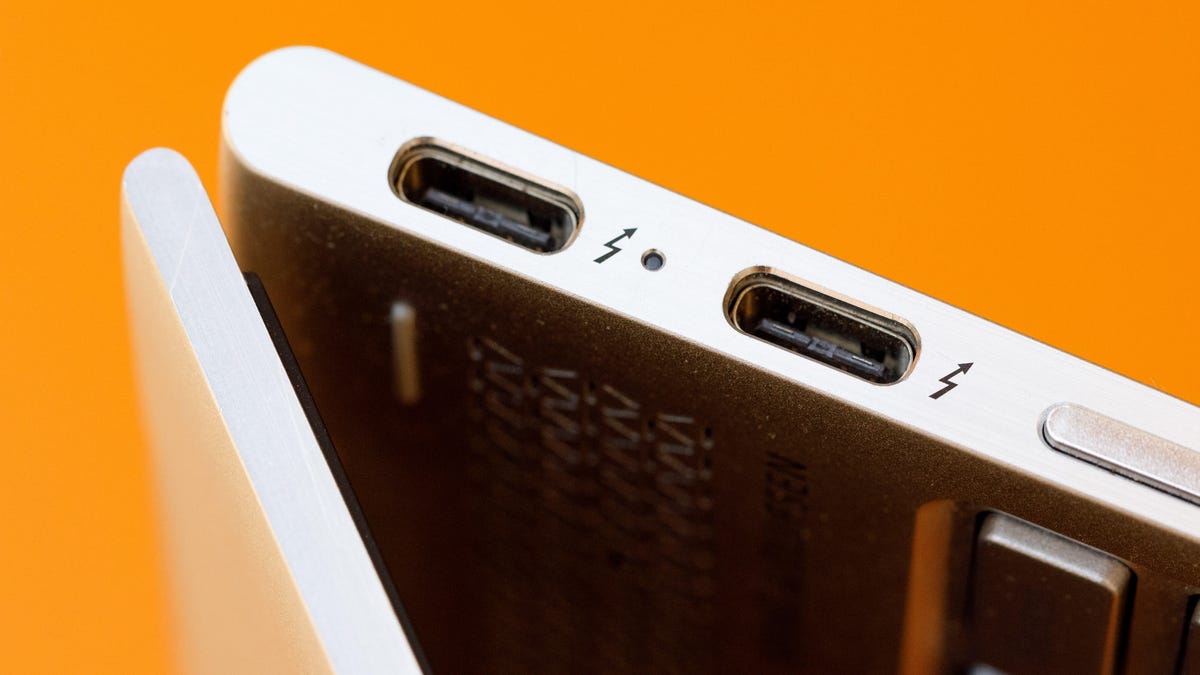Speed freaks rejoice, because USB could get twice as fast
The port's data speed is doubling today, but another doubling is possible. That would help when copying files and plugging in big monitors.
USB's performance is doubling right now, but you speed freaks should be pleased to hear another doubling is possible for the ubiquitous connection technology.
USB, short for Universal Serial Bus, is the wildly successful port that you probably use to plug your phone in to a charger and plug your external drive in to your laptop. When it arrived two decades ago, it was great for keyboards and mice, but at 12 megabits per second, it wasn't very useful for copying data to a thumb drive.
USB got faster, though. First came a boost to 480 megabits per second, which dramatically expanded USB's utility. Then a tenfold increase to 5 gigabits per second made it possible to download a copy of the movie "Baby Driver" in about 8 seconds. Next came 10Gbps, and this year, another USB doubling to 20Gbps is underway.
But Jeff Ravencraft, president of the USB Implementers Forum that's behind the technology, says another doubling is possible.
"The current structure of cables and connectors can operate up to 40Gbps," Ravencraft said at the CES tech show. "As the market demands higher bandwidth, I think we have a pathway to continue to improve data rate performance well."
While that 40Gbps speed isn't guaranteed, it seems inevitable at some point given computing industry trends toward ever-faster technology. That could help ensure USB remains a useful part of your digital life for another few years, better able to withstand the onslaught of convenient wireless data transfer technologies. Higher speed USB would make it better suited for fast access to big files on external hard drives and for plugging in high-resolution monitors.
It also means it's more likely to keep the even faster Thunderbolt a product you'll see only in a high-end niche. Intel's Thunderbolt technology is useful today, but with data-transfer speeds of 40Gbps, its performance advantage over USB is narrowing.
USB speeds have increased by a factor of 1,667 over the last two decades, from 12 megabits per second to 20 gigabits per second. Another doubling, to 40Gbps, is possible.
Faster USB could mean lower prices for high-performance peripherals because manufacturers of PCs and peripherals won't have to pay Intel to use Thunderbolt, said Patrick Moorhead, analyst at Moor Insights and Strategy.
"I am sure the USB device and host makers would like to get to this quickly, as the license fees would be lower," Moorhead said.
Intel, a USB fan but also the leader of the Thunderbolt technology, didn't comment for this story.
Starting with version 3, Thunderbolt embraced the USB-C connector, a move that lets PC makers offer dual-purpose ports on slim laptops . Thunderbolt and USB-C cables are compatible, too, at least to a point. This Thunderbolt technology shows what USB hardware can be capable of, said Brad Saunders, chairman of the USB Implementers Forum.
"Thunderbolt demonstrates there is a pathway," Saunders said.
When the industry will go down that pathway remains unclear, with 20Gbps only just beginning to arrive now. But with USB ports spreading to everything from car dashboards to bike headlights, it looks like the technology still has many years to grow.
CES 2018: CNET's complete coverage of tech's biggest show.
CNET en Español: Get all your tech news and reviews in Spanish.


